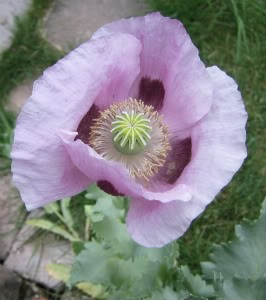The Ague or English Malaria
“the Marsh Agues have a terrible name and certainly are most unwelcome visitors”
(Cinque Ports Herald 1 Jan 1826 p.3 col.2 - the "ague" is sometimes called the English malaria, especially prevalent in marshy areas in Britain)
(Cinque Ports Herald 1 Jan 1826 p.3 col.2 - the "ague" is sometimes called the English malaria, especially prevalent in marshy areas in Britain)
Fen Ague or marsh fever, was a disease once common in the fens of East Anglia. The English word Ague derives from Old French “ague” meaning “severe fever”.
The word Ague was used by Chaucer in the 14th century and William Shakespeare also referred to it. It was not until the 19thC that the word malaria (malus aria, Latin for bad air) replaced Ague.
From the 15th century onwards, malaria was endemic along the coasts and estuaries of south-east England, the Fenlands, and estuarine and marshland coastal areas of northern England. The growth in international trade in the 16th century contributed to the spread of disease, as international traders introduced new sources of infection. Samuel Pepys, the diarist, suffered from Ague and Oliver Cromwell died of tertian ague in 1658. Major drainage of the Fens in the 17th century and better personal hygiene led to the decrease in Ague. Not just in the Fens, but many Essex and Thames valley marshlands were home to this fever. The fen people could not cure this disease, but took opium and other herbal potions and bark from ash trees to relieve the fever. A Fenland doctor wrote: “ a patch of poppies was usually found in most gardens”. In the 17th century, powdered cinchona tree bark, containing quinine was used to treat the Ague, and is still in use today; it was made from trees growing in Peru and Bolivia.
A Cure for the Ague: “Tues 2 April 1799 read in N.Paper a Recipe to cure the Ague:One tea-spoonful of Hartshorn; a large spoonful of vinegar; a large spoonful of brandy. Mix and take when you find the cold fit coming on, afterwards a teaspoonful of bark powder two or three times a day in any liquor but if in Port Wine so much the better" (from the Diary of Thomas Pattenden of Dover) (E.Kent archives)(Note: Bark powder means the bark of the chinchona tree which produces quinine)

Opium Poppy
Opium was and is used for a multitude of ailments including the Ague.
The Agues in the Romney Marsh: From a correspondent 1926:
There are living in the parish of New Romney 86 persons, 60 years of age and upwards, whose united ages amount to 6,012 years, averaging nearly 70 years, from a population not exceeding 1000, viz. from 60-70 48, 70-80 26; 80-90 11; 90-100 1; total 86.
From this number there are 14 married couples whose ages together amount to 1948. This information may not be unpleasing to your numerous readers and more particularly so when the Marsh has been pictured so unhealthy, surely this will be sufficient to convince the most timid that Romney is not a place so much to be feared; the Marsh Agues* have a terrible name and certainly are most unwelcome visitors, we must admit, yet when we look around and see our neighbouring parishes, whose bounds outskirt the level of Romney Marsh, subject to the different calamities of human nature, we might not possibly find a proportional number whose years would amount on average so great as that of Romney.” (Cinque Ports Herald 1 Jan 1826 p.3 col.2)
Lincolnshire: In low lying fever-ridden areas of Lincolnshire sufferers from ague used to swallow live spiders rolled in butter. Sometimes the spiders were taken with bread or breadcrumbs. This treatment was recommended in 1745 by Dr Meade of Lincoln. Thomas Mouffet (1553-1604) father of Little Miss Muffet nursery rhyme fame, prescribed 'a spider gently bruised and wrapped up in a raisin or spread upon bread and butter to be taken three times a day as a preventative against agues, (which may help to explain why Little Patience Muffet grew up with such a horror of spiders.)
Dr Muffet however did seem to regard spiders as a preventive against diseases of almost every kind and believed that in houses where spiders breed much there is no gout or other ills, or unhappiness.
Another remedy was given by John Goodyer the Lincoln botanist, writing in 1657, 'the spider being wrought into one masse with a plaister, spread upon linen and soe layerd to ye forehead or temples doth cure the periodical circuits of tertian agues', adding that the 'cobweb of it being layer on doth staunch blood and keep such ulcers as break out at ye top of the skinne from inflaming' (Spiders webs really do staunch blood and heal wounds and have excellent styptic properties).
The most beneficial species of spider was the garden cross spider, adorned with a cross pattern, sketched out in white on a reddish or dark brown background. You could also 'wear' a live spider imprisoned in a nutshell suspended about the neck (sometimes spider was enclosed in a bag together with a few flies to keep it alive as long as possible!)
(information taken from Lincolnshire Life magazine 1989 Feb.)
